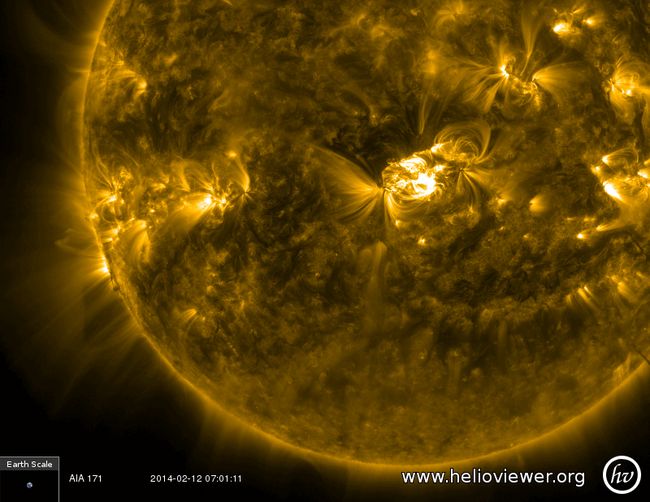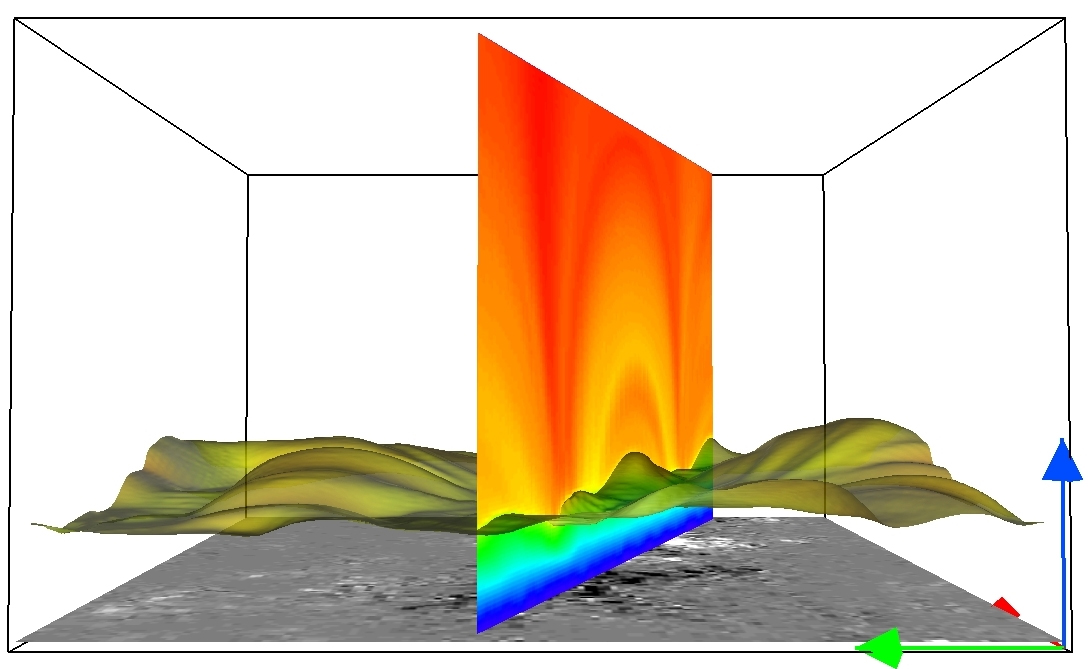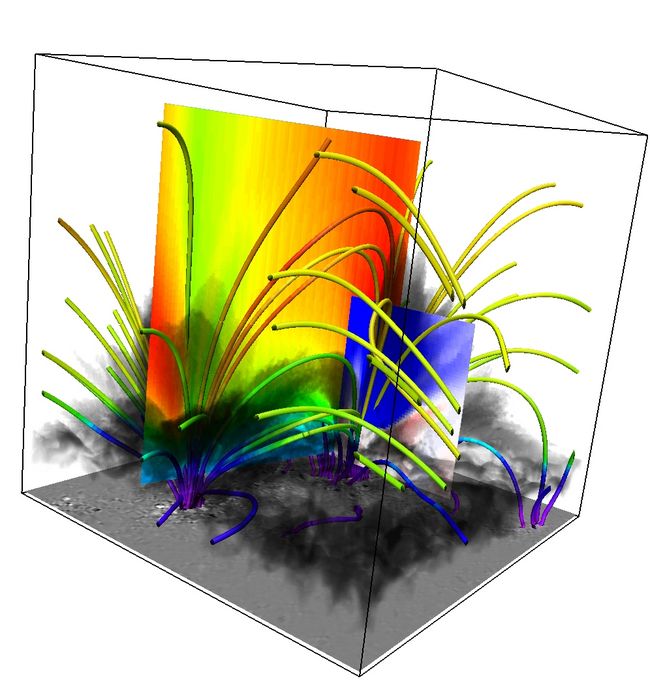ASTROPHYSICS
What Heats the Beautiful One Million Degree Hot Solar Corona?
Principal Investigator:
Sven Bingert
Affiliation:
Max-Planck-Institut für Sonnensystemforschung, Göttingen (Germany)
Local Project ID:
BRUSH
HPC Platform used:
Hermit of HLRS
Date published:
Scientists at the Max Planck Institute for Solar System Research in Göttingen employed a three-dimensional numerical model on GCS supercomputer Hermit of HLRS Stuttgart to investigate the heating process of the highly structured and dynamic corona.
The highly structured corona, best seen during solar eclipses, consists of plasma at around one million degree. This is more then 100 times hotter than the solar surface. The question arises what causes these high temperatures as the burning process takes places only in the core of the sun. Based on solar observations it is obvious that the heating process is related to magnetic fields. These fields are constantly created and destroyed within the sun and extend outwards into the solar atmosphere. Further more they are shuffled around on the solar surface causing an energy flux within the electro-magnetic field. But the processes how the energy stored in the magnetic field is converted into thermal energy is not yet fully understood.

Figure 1: The image shows the emission of coronal plasma at around one million degrees. The lower lying solar surface is much colder and therefore not visible. The complex coronal structures such as coronal loops are clearly shown in this image.
Copyright: Max Planck Institute for Solar System Research, Göttingen/GermanyScientists from the Max Planck Institute for Solar System Research in Göttingen employed a three-dimensional numerical model on GCS supercomputer HERMIT of HLRS Stuttgart to investigate the heating process of the highly structured and dynamic corona. The model solves the conservation and balance equations of the fundamental physical quantities, e.g. mass, momentum, and thermal energy. Applied was the forward model approach, this means that the scientists derive the observational consequences based on the temporal and spatial distributions of the physical quantities in the model. Hence, the emission of specific optical thin coronal emission lines was synthesized. These artificial observations of the numerical experiment are then compared with actual solar observations with reference to spatial structures and temporal evolution.
The challenge of these numerical experiments is to cover the wide range of temporal and spatial scales. The model includes the solar atmosphere above an active region with a typical size roughly 100 million meter in diameter. But the researchers also wanted to resolve structures in the order a few thousand meters. On the other hand there are physical processes, such as thermal conduction, which require a temporal resolution of milliseconds while the total time covered by the model should be in the order of a day. Furthermore the physical properties of the model atmosphere vary over several orders of magnitude, e.g. the density varies by a factor of 10 billion within the physical domain.
To fulfill these requirements, the scientists used for their model a large number of grid points and subdivided the domain to many sub-processes using message parsing interface (MPI). Additionally, millions of time-steps were needed to cover the full temporal period of the numerical experiment.

Figure 2: The figure shows a result of the numerical experiment. The bottom magnetic field at the solar surface (greyscale) as an input for the driving of the model. The vertical cut depicts the density structure and in green the corrugated surface shows the height of the transition region between the hot outer corona and the cooler low lying chromosphere.
Copyright: Max Planck Institute for Solar System Research, Göttingen/Germany
Figure 3: The figure shows many different aspects of the numerical experiments. Shown are the velocities (cut in blue-red), the densities (cut red-green), magnetic field lines, and in black the source of a coronal emission line.
Copyright: Max Planck Institute for Solar System Research, Göttingen/GermanyThe project BRUSH was conducted by the "Coronal Dynamics Group" at the Max Planck Institute for Solar System Research in Göttingen under the PI Dr. Sven Bingert. For the numerical experiments the Pencil-Code was employed, an international open source project which is used for many different astrophysical problems in the field of magneto-hydrodynamics including particles.
Scientific Contact:
Dr. Sven Bingert
Max-Planck-Institut für Sonnensystemforschung
Justus-von-Liebig-Weg 3, D-37077 Göttingen/Germany
e-mail: bingert@mps.mpg.de